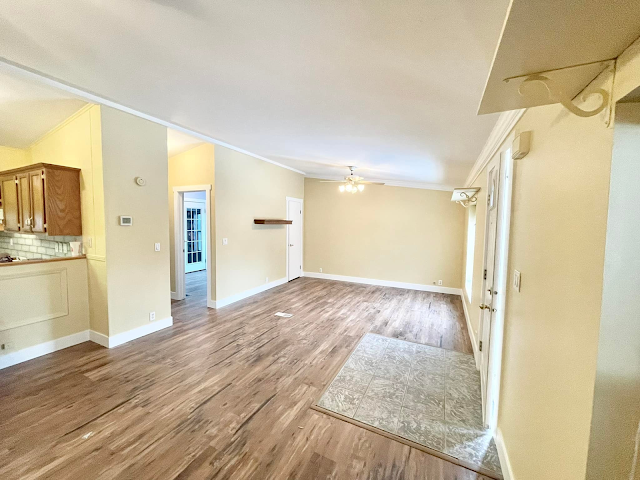How to Prepare Your Home for a Successful Interior Painting Project in Nampa
Starting a house interior painting project in Nampa will help your house to feel and look much better. But good preparation is absolutely essential to guarantee a seamless and effective operation. Whether you're cleaning one room or the whole house, following guidelines for residential interior painting in Nampa will enable you to efficiently get great results.
1. Plan Your Project
You should outline your painting job before you begin. Choose the rooms you wish to paint, the colors you wish, and any other details including accent walls or textures. Planning guarantees you have all you need and helps to simplify the process.
Questions to Consider:
What colors complement the existing decor?
Think on how fresh colors would complement your present furnishings and décor. See how different times of the day a test paint sample looks on walls.
What finish is best for each room?
While satin or semi-gloss finishes look great in high-traffic or damp spaces like kitchens and bathrooms, Matte finishes are perfect for low-traffic areas.
2. Get Essential Tools
A good painting job depends on proper tools and supplies. Here is a rudimentary inventory list for your needs:
Paint (if needed using primer).
Rolling tools and paint brushes
Painter's duct tape
Drop towels
Painter's trays
Ladder or stair staircase
Roughness of Sandpaper
Cleaning materials (soap, water, towels)
To get a professional finish, be sure you select tools and premium paint. When painting your house in Nampa, take local advice on paint brands that would last in the local temperature.
3. Prepare the Room
Avoiding any mess and safeguarding your items depend on the room being properly ready. Use these guidelines to have the space ready:
Clear the Room: Clear the room by moving objects and furniture out of it. Should this prove unworkable, cover them with drop cloths to guard against paint splatters.
Remove Fixtures: Remove wall-mounted fixtures including curtain rods, outlet plates, and light switch covers.
Cover Floors: Covering flooring with drop cloths or old sheets is easy. Painter's tape will help you to secure them and stop slippage.
Clean Walls: To get dust and debris off walls, wipe them. A clean surface stops flaws and helps paint stick better.
4. Repair and Prime
Before painting, look for any flaws in your walls that demand repairs:
Patch Holes and Cracks: Use spackle or joint compounds to cover cracks and holes. Once dried, smooth the surface.
Sand walls: To provide a smooth surface, gently sand the walls. This stage lessens brush marks and helps paint adhere better.
Apply Primer: Use a primer if you are painting over a dark hue or substantially altering colors. Primer improves the final color and lets the paint cover more uniformly.
5. Tape and Cut Shears
Achieving neat lines and safeguarding areas you desire not painted depends on painter's tape:
Apply Painter’s Tape: Tape off around windows, doors, and trim using Painter's Tape. To stop paint from seeping under, press down the tape firmly.
Protect Trim: Painter's tape should cover any trim to provide a neat line where the walls meet it.
6. Start Painting
Having ready the room, you may start the painting process:
Cut In Edges: Start by brushing the room's corners and edges using a brush. This method, sometimes referred to as "cutting in," helps build a border you'll subsequently combine with the roller.
Roll on Paint: Paint the greater portions of the wall with a roller. For consistent coverage, paint in a W pattern; steer clear of overloading the roller to avoid drips.
Apply Multiple Coats: Apply many coats depending on the color and kind of paint; this will help before adding the next layer, let every one dry completely.
7. Finish Touches and Cleanup
Painting is done; now it's time for cleanup and to apply last touches:
Remove Painter’s Tape: Carefully remove painter's tape while the paint is still just somewhat moist to prevent any dried paint from coming off.
Clean Brushes and Rollers: Whether directed by the paint manufacturer or using soap and water or another, wash brushes and rollers.
Replace Fixtures and Furniture: Once the paint is totally dry, reattach outlet plates, light switch covers, and other fixtures. Move your furniture back into position and take off any protective covers.
Conclusion
Getting your house ready for a Nampa residential interior painting project calls for careful planning, shopping for the correct tools, and appropriately cleaning the space. These guidelines help you to guarantee a flawless and effective painting experience. Recall that the preparation is the secret to a professional-looking finish; so, take your time to get it perfect.
FAQs
1. How long should I wait between coats of paint?
You should usually wait between coats of paint at least two to four hours. Nevertheless, the type of paint used and the surroundings will affect this as well. See the paint container for particular drying periods.
2. Can I paint over wallpaper?
Generally speaking, painting straight over wallpaper is not advised since it could cause bubbling or peeling. Remove the wallpaper first and ready the wall as you would for a standard painting project if you choose to paint a wall with wallpaper.
Following the suggested preparatory guidelines and answering these questions will help you to arrive at a beautifully painted house you can enjoy for many years to come.






Comments
Post a Comment